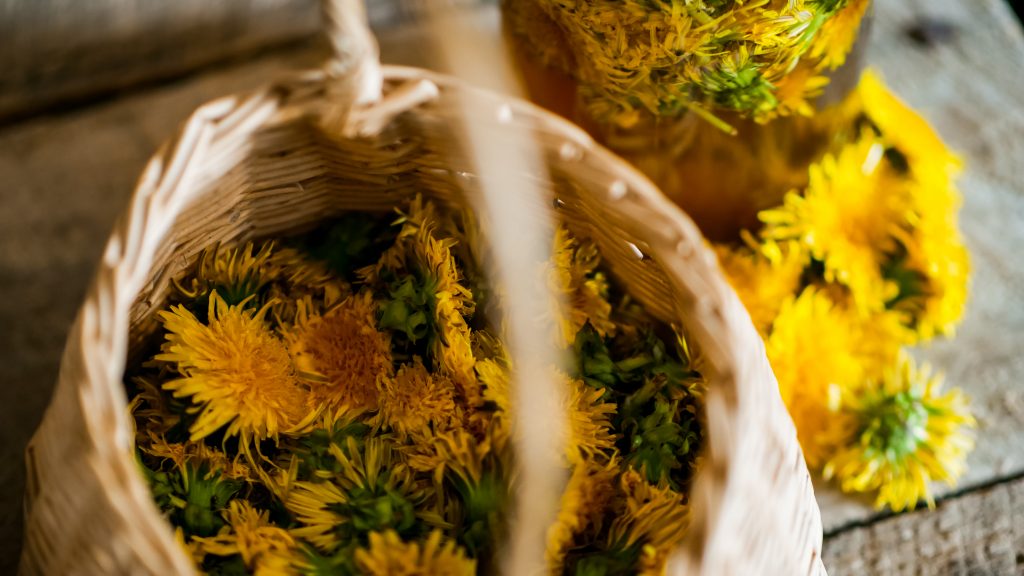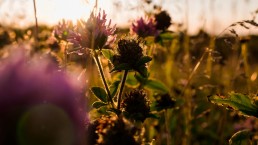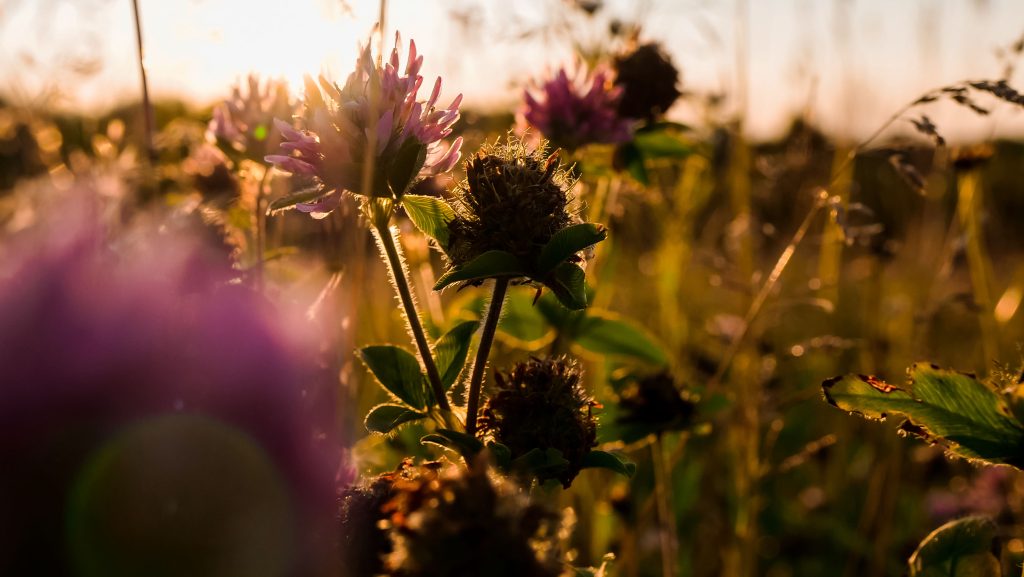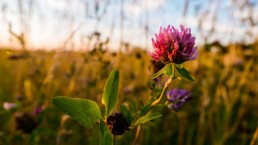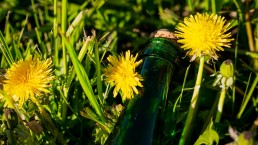Herbal Actions: Alteratives
Herbal Actions
What is a “herbal action”?
When we speak about the action(s) of a certain plant, we are referring to one or more effects a plant can have on our body. Often these actions are explained in two or three words; however, herbal actions are so much more than that! Since plants are wonderful complex beings, they also have several actions. Most herbs can compliment their action(s) in combination with another herb, basically showing off their best side with the support of a “good friend”. Sometimes they work great on their own, but most of the times, they excel with a good buddy on their side. Think- Teamwork!
Alteratives
In this blog post, I would like to have a closer look at the ‘alterative’ action of herbs. After studying my resource books and putting together what I have gathered from my mentors, it turned out to be quite difficult in nailing it down to one definition. What can be found in the next few lines, is a summary of my own attempt to define alteratives. While some herbalists may agree with the words below, others may crunch and frown upon this review. As with all studies, especially herbal studies, learn your craft from many different teachers and find what works best for you.
When I think of alteratives, I immediately think of a tonic action. Tonifying herbs usually slowly, but gradually, alter and support the bodies natural actions and functions. Unlike carminatives for instance, which may help you feel better promptly after a heavy meal has left you feeling full and with an aching stomach, tonic herbs like alteratives take more time to show effects. These effects however, keep one in for the long run and can show beneficial changes in several organs and organ systems. Herbalists once referred to alteratives as ‘blood purifiers’. Nowadays however, most herbalists no longer use this term, as only pure blood can keep one alive and if blood would be poisoned or ‘impure’, our bodies would die.
How Alteratives Work
Alteratives gradually restore proper function of the body, which automatically increases overall health and vitality. By helping to disperse toxic buildup in the interstitial fluid, alteratives aid the body to properly remove toxins and therefore, improve the metabolism, supporting proper absorption and delivery of nutrients and insure healthy elimination. As alteratives are masters of proper elimination, they mainly work on the kidneys, liver, lungs, the lymphatic system and skin.
Many alterative herbs are rich in minerals, vitamins and other trace elements and highly nourishing substances. Furthermore, most alteratives are alkalizing to the blood and help neutralize excess acid in the system. Some work by stimulating digestive function and some are immunomodulators. As stimulants, they mildly stimulate and activate the vital organic functions of the liver and gall bladder.
Personally, I have successfully used alteratives for a variety of instances. I am most excited to share how I was able to effectively clear stubborn eczema on my hands. By its special affinity in supporting organs of elimination, alteratives can help to restore sluggish liver functions. As the master detoxifier, the liver has a wide variety of functions and tasks. If these lack, so does proper elimination, and other organs have to take over the job of a comprised liver. Usually, the lungs, skin, kidneys, liver, colon and lymph share the many tasks of elimination. If one organ works at half capacity, another organ has to pick up the slack. In many cases, it can fall onto the skin, which then may break out with rashes or other skin eruptions. Alteratives are best supported with a holistic treatment protocol, which your herbalist can help you design. This could include dietary, physical, emotional and other lifestyle changes.
It is important to note that initially after starting treatment, skin eruptions can worsen. This is because the skin has already been trying to push these ‘stuck wastes’ out, and with the help of alteratives, now get’s a ‘push’ to finish this task. Therefore, before improvement is seen, initial worsening may happen, usually lasting for only a short period of time.
When to Use Alteratives
When in doubt, use alteratives. As most alteratatives are very gentle and work over a longer period of time, they should be the first group of herbs to consider when working with chronic inflammatory and degenerative diseases. These include skin issues, digestion issues, heat and dryness, cysts, arthritis and autoimmune conditions.
Energetics
As for energetics, many alteratives are bitters. Generally, most bitter plants are drying. In traditional Chinese medicine toxins of the blood and toxin-producing infections are considered ‘excess heat’. Since the Liver is associated with heat, too much heat can create extreme imbalance. Many alteratives are cooling liver herbs.
What are Energetics?
In herbalism we often refer to the “energetics” of plants. This can be a very helpful tool, as we get to not only consider the medicinal action of a plant and a certain condition we are trying to treat, but much more than that, we actually learn to work with the entire ecosystem of both plants and humans/animals. The basic energetics I will be referring to are cold/warm/damp/dry. As an example, if your underlying body condition is usually cold and dry, counter this with warm and damp herbs. This being said, I am not speaking of the actual, measurable temperature of a plant or fruit, but the effect this herb has on the body. As an example, think of biting into a piece of ginger or a cayenne pepper. Hot or cold? How about nibbling on chickweed or biting into a watermelon? Hot or cold?
If this interests you, Matthew Wood’s Book “The Practice of Traditional Western Herbalism” is awesome, or try Jim McDonald’s “Actions and Energetics in Western Herbalism” (available online).
Examples of Some Alterative Herbs
- Arctium lappa (Burdock root) is both preventive and medicinal as it supports the detoxification process. Burdock root assists liver supporting toxin elimination through the skin and bowels. As a bitter, Burdock stimulates the secretion of digestive juices, especially bile. Therefore, it helps with digestion and appetite. Burdock is cooling, as it cools the ‘heat’ of rashes. It is extensively used for the treatment of skin conditions that result in dry and scaly patches. Most effective for psoriasis if used over long period of time. Also great for teenagers with problem skin.
- Taraxacum officinale (Dandelion root and leaf) is similar to Burdock root. Dandelion is useful in signs of a hot inflamed liver with stagnation. It improves liver function and aids the natural detoxification process while protecting liver cells from oxidation and damage. The leaves have clear affinity for the gallbladder and, as such, aid in the digestion of fats. Ideal for those with “sour stomachs”. Great as digestive bitter, cooling to the liver. For chronic inflammation of the liver, it aids proper metabolism, supports detoxification and elimination. It also brings relief in gout and rheumatism as well as glandular swelling.
- Berberis aquifolium, Mahonia spp. (Oregon Grape Root) As a mild alterative, Mahonia is great for use with children as well as the elderly. It has a strong affinity for the liver and supports detoxification and elimination. As a bitter, moistening root that supports secretion of bile from the liver, it shows efficiency in bowel movements. In his book, The Practice of Traditional Western Herbalism, Matthew wood writes that, ‘The typical Mahonia patient is thin, dry, and constipated, with rough, scaly, dry skin.’
- Urtica dioica (Nettles) are considered a ‘blood building herb’ (eczema, headaches) as it tonifies organs and boosts the actions of many organ systems with a special affinity for the urinary tract/kidneys. Nettle is used as a spring tonic and general detoxifying remedy, being an excellent source of nutrition for the weak and feeble, recovering from illness or nursing mothers. Nettles are one of the most nourishing tonic herbs and foods we have in Western herbal medicine. Often times, Nettles are used specifically for childhood eczema and beneficial for all varieties of this condition, especially nervous eczema. Nettles can be helpful as a component of treatment for eczema in adults.
- Trifolium pratense (Red clover) Red clover is said to ‘thin the blood’ and has purification properties often benefitting those suffering with eczema, acne and other skin conditions. It is an important remedy for many childhood ailments and may be used safely for any case of eczema. Red clover is considered in cases of edema and hardened, sore lymph nodes, softening stubborn, hard, encysted lymph nodes. For clearing up cysts in the body, as any alterative, red clover needs to be used over a longer period of time. It has a special affinity to glands around the neck, under the ear and towards the back of the neck, as it tends towards single swollen glands. Check out the doctrine of signatures; The flower head resembles a lymph node. Further, Red clover acts on the liver, protects and aids in detoxification.
I hope this post gave you a little insight on Astringents and how they can interact with our body. This topic is covered much more in depth in the herbal course, which is currently developed and coming soon by our group of wonderful herbalists.
Resources:
Besides my own words, this write up features information from the following resources:
- Jim McDonald – Foundational Herbcraft – www.herbcradft.org – collected writings from www.PlantHealkerMagazine.com.
- David Hoffmann – Medicinal Herbalism: The science and practice of herbal medicine. Healing Art Press, Rochester, Vermont 05767. 2003.
- Abrah Arneson – The Herbal Apprentice: Plant Medicine and the Human Being – Green Heart Press. 2014.
- Matthew Wood – The practice of Traditional Western Herbalism – Basic Doctrine, Energetics and Classification – North Atlantic Books, Berkley, California. 2004.
- Rosemary Gladstar – Herbal Recipes for Vibrant Health – Storey Publishing, 2001/2008
A Friend in Red Clover
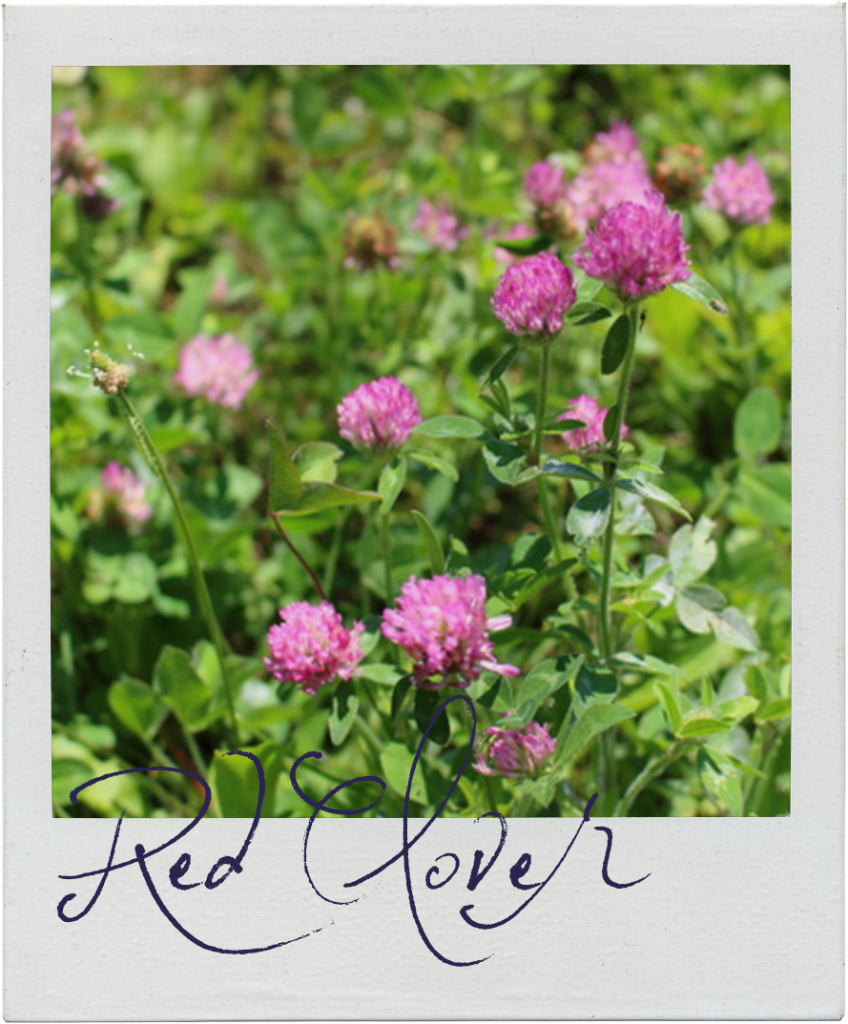
A Little Talk with Red Clover
Sometimes life throws you a curve ball and you are knocked to the ground with such force that you can only wonder, “what the hell just happened?”
This literally happened to me a few years back, on a beautiful summer day, playing a friendly game of baseball with my First Nation community. A mix of all ages and skill levels gathered for good fun. I was back catching when a teenage boy on short with a powerful arm threw the ball home. I was in position, glove up, sun in my eyes, with no protective mask on, when I heard a crack and fell to the ground. I ended up with several fractures in my left cheek bone.
Many weeks of healing ensued and I think back to the helpers along the healing journey, especially the plants. Arnica, Solomon’s Seal and especially Red Clover. My friend Penelope teaches an old folk saying about Solomon’s Seal; “for a willful woman stumbling on her hasty husband’s fists!” My injury was a blow to the face, so Solomon’s Seal seemed just the thing – and there was Arnica for the pain. Now, Red Clover does not seem the obvious go-to herb for this issue, but this pretty herb came to my soul’s rescue.
A few days after the accident, I left my bed for a walk to feel the warm summer breeze on my swollen face and hear the birds sing to cheer me. I walked right into a patch of thick Red Clover so beautiful it stopped me. The leaves were speckled with white and the plump pink flowers were buzzing with bee activity. I gathered some blossoms and headed home to fill the kettle. The cup of Red Clover tea soothed my soul and my nerves, and I continued to visit that clover patch through my weeks of healing. Red Clover is an alterative, sedative, deobstruent, and for me… a friend when I needed it most.
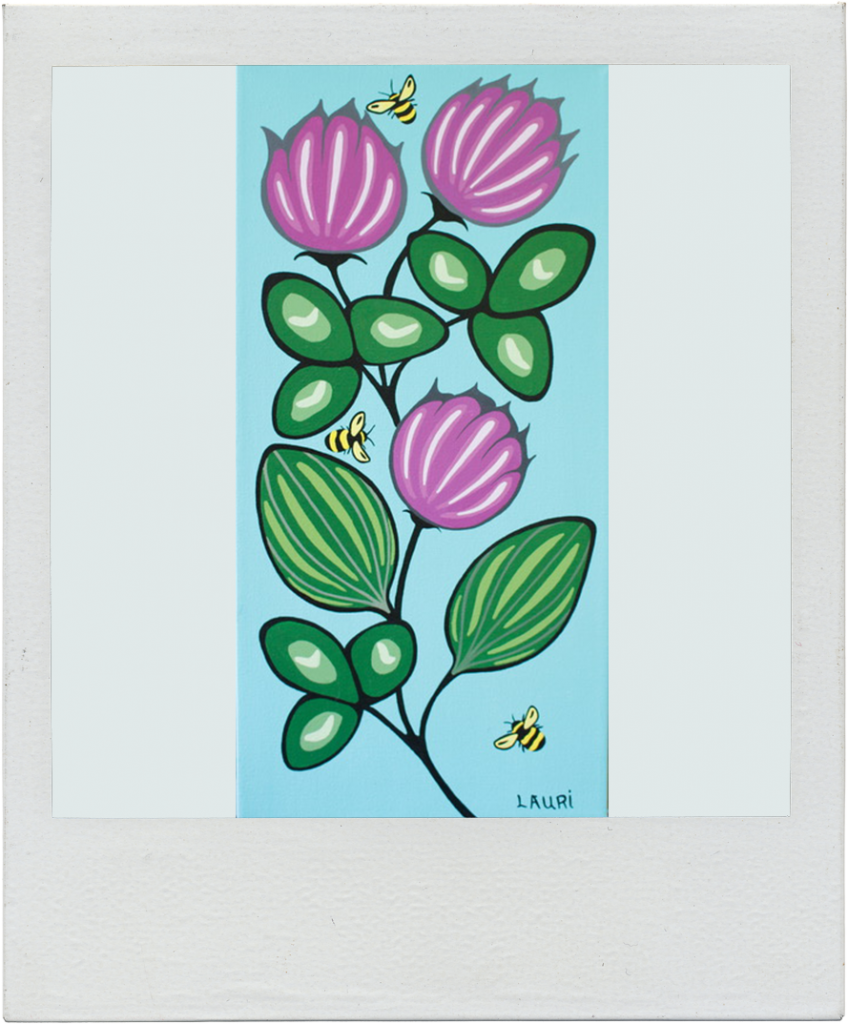
Blog “polaroid” photos and art provided by Lauri!
Making Herbal Wines
The Art of Herbal Wine
One of the many pleasures of a life in the country is the abundance of free food and the makings of fine drink. Sitting here at my desk, glass of Dandelion wine in hand, the golden glow of the flickering firelight passing through the pale amber nectar drifts my mind back to the Spring and the picking and preparation that led to this magic moment.
Anyone who has ever made their own wine or beer will understand my feelings but nowadays of course, wine nearly always refers to a Chateau produced store bought liquid, made from grapes grown in some exotic far away land. However, until very recently, many other varieties of fruit and even flowers were used by enterprising brewers. Dandelion, Red Clover, Rosemary, Melissa and Rose flowers were all used and all have their own distinctive nose, flavor and effect. Herbs were used for their traditional medicinal values, the wine-making process being merely the method of preservation.
Dandelion for the digestion and liver, cowslip to help with sleep, clover flowers as a tonic and mild euphoriant, these herb wines are very simply made, with minimal amounts of time and equipment and once tried and successfully imbibed, they can become an integral part of your routine and life style. After all, what better way is there to take your medicine than in a glass of fragrant ambrosia? Hoping that I’ve caught your interest, (excuse me while I pour myself an other glass!), perhaps you’d like to give flower wines a try.
Here to help you on your way is my own tried, and very well tested, recipe.
Ingredients:
- Two quarts of Red Clover or Dandelion flower-heads. (Or any other type of edible/medicinal flower. Good ones to try are Calendula, Rose, Violet, Elderflowers, etc. Use your own judgement, the recipe is good for almost any combination of flowers and herbs).
- 1 Kilo (2.5 lbs) of sugar*
- 3 lemons
- 4 ounces un-coated raisins or sultanas
- 1 packet Champagne type wine yeast.
You will also need some equipment, most of which can be found in the kitchen:
- A two or three gallon container, (stainless steel, earthenware, glass or un-chipped enamel)
- A one gallon glass flagon
- fermentation lock*
- campden tablets*
- siphon tube
(These can all be obtained, along with the yeast, quite inexpensively from any home-brewing store).
Notes:
*White sugar (preferably organic) is the best to use, as it allows the full flavours of the herbs and flowers to come through in the wine. Using this recipe the vast majority of the sugar is converted into alcohol by the yeast, giving you a dry wine.
*Campden tablets are a sulphur-based product that is used primarily to sterilize containers for wine, cider and in beer making to kill bacteria and to inhibit the growth of most wild yeast, so improving the taste of your wine. It will also remove both free chlorine and chloramine, from water solutions. It leaves no flavour and thorough rinsing will leave no trace.
*A fermentation lock is used in beer brewing and wine making because it allows the carbon dioxide released during fermentation to escape the fermenting vessel, while not allowing air to enter and thus avoiding spoiling the wine.
Preparation
Pick the flowers on a sunny morning after the dew has dried. They are best picked after several days of full sun but Mother Nature is not always so obliging. Choose only the best flowers and discard all green parts at the base of the flowers. (They will make the wine bitter). Collect two full quarts of flowers for each gallon you wish to make. (This is a good job to give to the kids on a sunny Sunday afternoon. You won’t see them for at least an hour.) It is very important that you collect only from areas that have not been sprayed with garden or agricultural pest sprays. Avoid all roadside flowers as they contain high levels of pollutants.
Sterilization
It is important before starting in the kitchen to ensure that all the implements and containers used are scrupulously clean. Make up a sterilizing solution using the campden tablets, (follow the instructions on the pack) and then thoroughly rinse and clean everything you intend to use. This is the most important operation in home wine making, get it right and your wines turn out perfectly every time, screw-up and your friends will find all sorts of reasons for why they can’t pop over to watch the game, join the barbecue, etc. etc. Anyway, we are digressing. Back to the wine…
Clean Your Herbs
Clean the flowers of insects and dirt and place them into the largest container. Add the juice from the three lemons and the washed raisins or sultanas, and immediately pour over them six pints of boiling water. Stir it all up with a sterilized spoon, cover the container with a sterilized lid and leave to stand for twenty four hours.
Day Two
Next day, lift up the lid and take a peek at the dead flowers and other bits, floating in the water. Hmmm… Give it all a good stir and then strain out the liquid into a clean sterilized container. Rinse out your original container with some sulphite solution and then immediately pour the strained liquid back in. Add the sugar and two pints of boiling water, stirring well so as to dissolve the sugar, and then add the yeast, which has been prepared beforehand as instructed on the package. Stir it again, cover and put it away in a warm spot where the temperature stays around 70-80 degrees. Now forget all about it for one month.
After One Month…
The month has passed and you rush like the wind to take a look at your wine. Urgghh!! It smells weird and looks weirder, but don’t worry, every thing should work out fine. This is where the siphon, flagon and fermentation lock come into the picture. First sterilize all your equipment with a sulphite solution and rinse thoroughly. Then siphon the contents of your brewing bin into the flagon. This will give you your first taste, but don’t despair it gets much better! Set up the fermentation lock as per the manufacturer’s instructions, pop it on top of the flagon and now take it back to that warm out of the way place where you hid it before.
The Final Wait…
Now comes the hardest part of the whole show. You have to forget all about this big bottle of fermenting nectar for at least six months. Don’t be tempted to peek inside, smell or God forbid – taste your new concoction! Don’t even think about it! That day is still in the far future.
Six months have passed. November arrives and the nights are getting longer. Remember the wine? It’s now ready to be bottled. You’ll need about six or seven bottles for each gallon. Use only those bottles that are designed to hold pressure, i.e. Champagne or sparkling wine bottles, even those thick heavy old-fashioned cola bottles. Use a sulphite solution to sterilize the bottles, corks and caps, and using a sterilized siphon tube, carefully siphon the clear liquid from the flagon into the bottles without disturbing the sediment in the flagon. Tastes pretty good now, eh!
To make your wine just a little sparkling you can add no more than a half teaspoon of sugar to each bottle. Seal the bottles well and let them stand in a warm place for three days. Then place them in the coolest part of the house and wait six more weeks. It will then be just about ready to drink. Of course like many wines it will taste better if left longer, (about a year is best).
But of course we’re all only human and so must inevitably try out the fruits of our labour. Invite around your true friends, break out the best glasses and then carefully open your first delicately cooled bottle, without disturbing the sediment on the bottom. Pour carefully into each glass, filling them all in one delicate movement, again so as not to disturb the sediment. Sit back, raise your glass in a toast and sip this delightful ambrosia. Revel in the complements and congratulations of your friends, for they are truly deserved. And think of the coming Spring and the fifteen gallons that you plan to brew.
Good luck!!!
